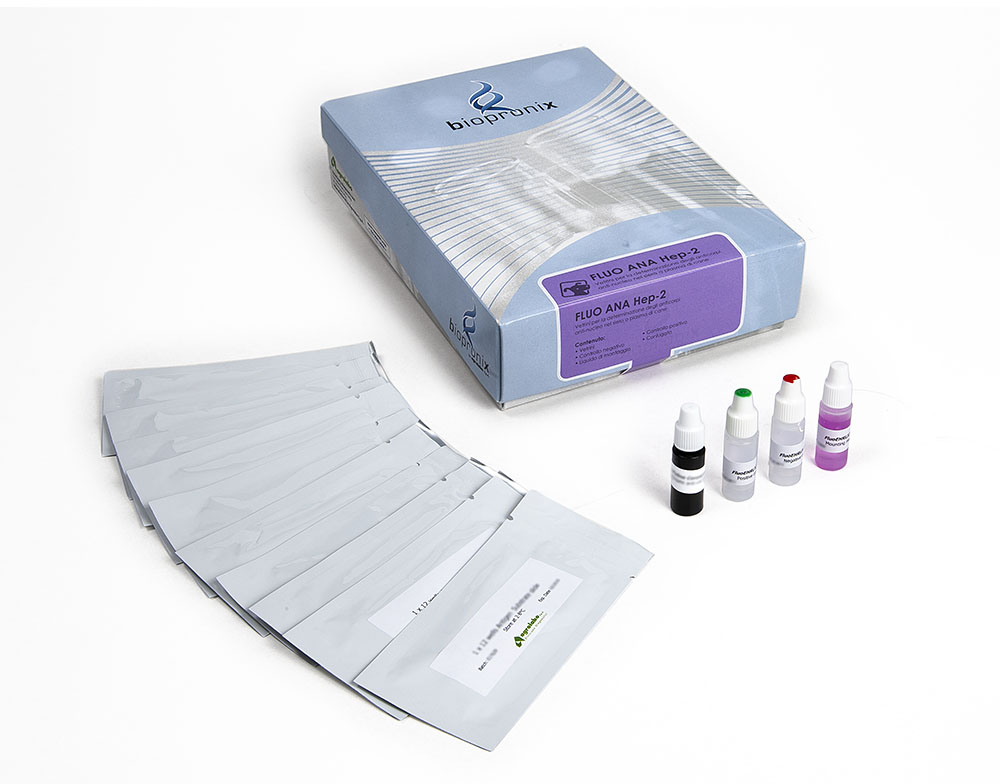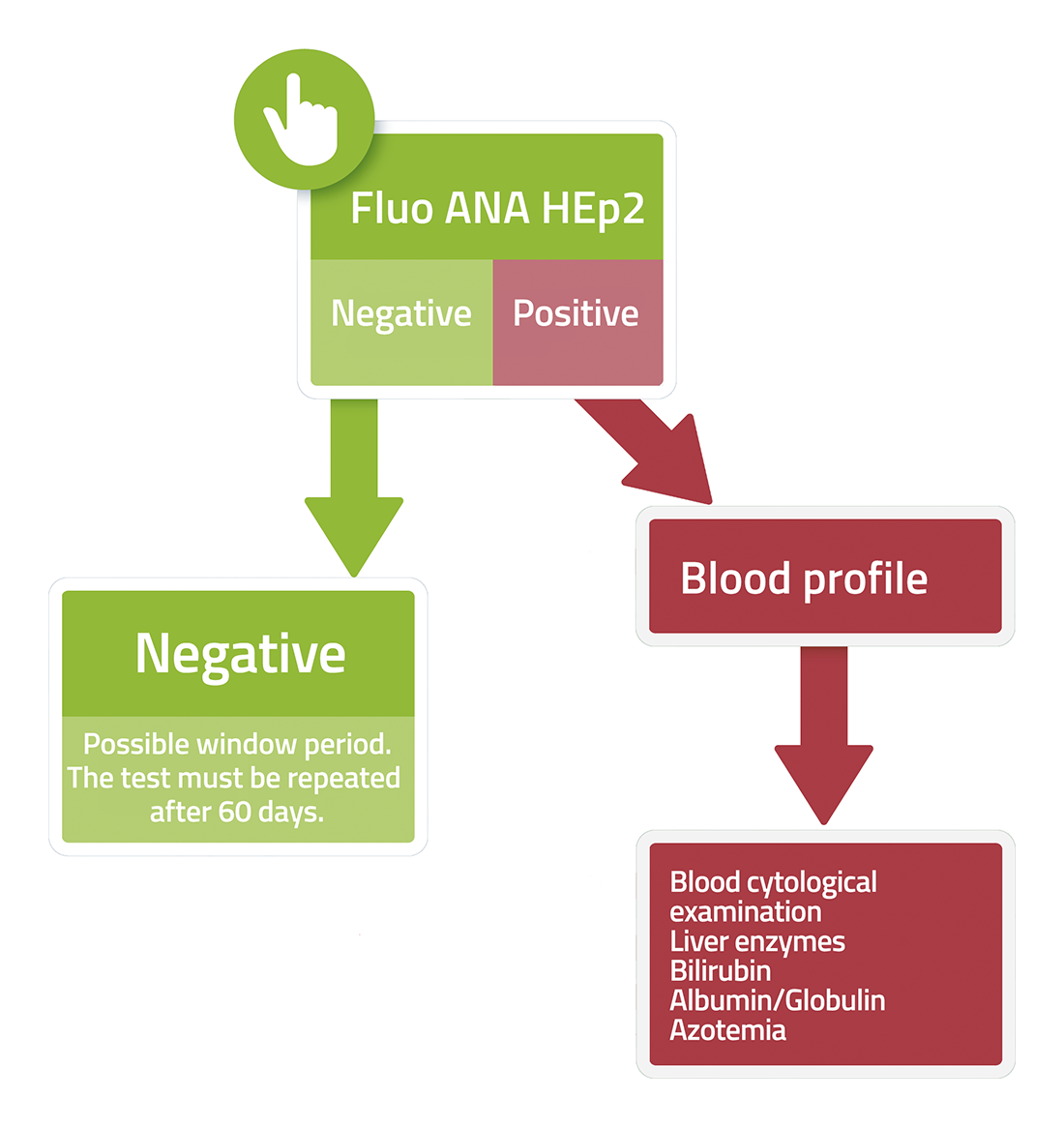Fluo ANA HEp-2
IFA kit for the detection of anti-nucleus IgG antibodies
Fluo ANA HEp-2 is a test based on the immunofluorescence technique for the detection of anti-nucleus IgG antibodies (ANA) in dog serum or plasma samples.
10 slides
50 slides
The search for antinuclear antibodies (ANA) is performed with mammalian cells, HEp-2 cell. The ANA research test provides positive results in 97% – 100% of dogs affected by Systemic Lupus Erythematosus with titers that often exceed the value of 256. The highest titers are found in clinical cases of greater severity and progressively decrease with therapy. .
Systemic lupus erythematosus (SLE) is a prototype of a polyorganic autoimmune disease that manifests itself in various clinical and immunological aspects. The condition is found in humans, mice, monkeys, dogs, cats, horses, and even poikilothermal species such as snakes and iguanas. In dogs, SLE is characterized by a low incidence (0.027% of the canine population of the United States) but by a high degree of variability of clinical signs and possible outcomes, thus posing significant diagnostic difficulties.
Usually medium and large breeds are most affected, in particular the Bourbon and the German Shepherd. Both sexes are affected indifferently; typically 5-year-old subjects are affected, although there is certainly a significant amount of time between the age at which the condition appears and the time of diagnosis. It is possible that the first signs of SLE are not recognized or that the diagnosis is not reliable. The clinical signs of systemic lupus erythematosus are extremely variable and, in many cases, are not observed simultaneously, but at subsequent moments in the evolution of the disease. As a general rule, the coexistence of three or more clinical signs is observed only in advanced cases involving a poor prognosis. Canine SLE, similarly to the human form, is a chronic disease in which subacute phases and relapses alternate.
- Fever: especially in the acute phase, in some cases the temperature rise can be very high.
- Polyarthritis: it is the most evident clinical manifestation, it is a polyarticular form, non-erosive and non-deforming. In some animals, painful resentment is evident, manifested through difficulties in locomotion.
- Renal disorders: glomerular lesions, revealed by the presence of proteinuria (greater than 0.5 g / l) or microhematuria, are frequent. These are important prognostic parameters given the risk of developing renal failure.
- Dermatological lesions: the visual appearance of skin lesions is extremely variable, although it is usually characterized by photosensitization with selective localization in areas exposed to sunlight (eg dorsal region of the forelimbs, face and skin areas poorly protected by hair. The lesions are represented by alopecia, erythema, ulcers, scabs and occasionally hyperkeratosis.Oral ulcers are uncommon (in less than 11% of subjects) but when present, they are strongly indicative of SLE.
- Hematological signs: haemolytic anemia (13.3% of subjects) and thrombocytopenia (rare), leukocyte abnormalities with high incidence (20% of subjects).
- Other clinical manifestations: polymyositis, dermatomyositis (8%), pleurisy-pericarditis (8%), polyneuritis and signs affecting the central nervous system (infrequent).

